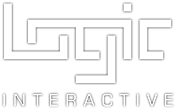CCS
DuVerden Sjøfartsmuseum og Vitensenter, Porsgrunn, Norge | 2022
Vi må redusere karbonutslippene våre for å dempe effektene av klimaendringer. Sementindustrien er en av de største bidragsyterne til CO2-utslipp i byggebransjen. Norcem i Norge blir den første sementfabrikken i verden som har et karbonfangstanlegg som vil redusere CO2-utslippene med 90 %.
Teknologien bak dette er CCS: Carbon Capture and Storage.
Vi laget en interaktiv installasjon som viser hvert trinn i karbonfangstprosessen i sementfabrikken. Gjennom fysiske, taktile elementer som knapper, spaker og hjul, kan besøkende starte forskjellige kjemiske reaksjoner i hvert trinn av CCS-prosessen. Etter hvert trinn får besøkende tilbakemelding på prosessen og de kan se CO2 bevege seg fra trinn til trinn i lysrørene ovenfor.
En CCS-brikke brukes til å aktivere anlegget. Brikken aktiverer hvert trinn i prosessen og lagrer besøkendes poeng og statistikk.
Mot slutten av installasjonen kan de besøkende se egen score og de blir oppfordret til å utforske neste stasjon: "Lagring", hvor de kan velge en landformasjon under vann som er best egnet til å lagre CO2.
We need to reduce our carbon emissions to mitigate effects of climate change. The cement industry is one of the biggest contributors of CO2-emissions in the construction industry. Norcem in Norway will be the first cement factory in the world to have a carbon capture facility that will reduce its CO2 emissions by 90%.
The technology behind this feat is CCS: Carbon Capture and Storage.
We made an interactive installation showing each step of the Carbon Capture process in the cement factory. Through physical, tactile inputs like buttons, levers and wheels, visitors can start different chemical reactions in each step of the CCS process. After each step, they get feedback on the process and they can see the CO2 move from step to step in the light tubes above.
A CCS-token is used to activate the installation. The token also activates each step in the process, and it saves the visitors' points and statistics.
The visitors can see their score at the end of the installation and they are invited to continue in the next station: "Storage", where they have to choose a geological formation underwater that is best suited to store CO2.


























